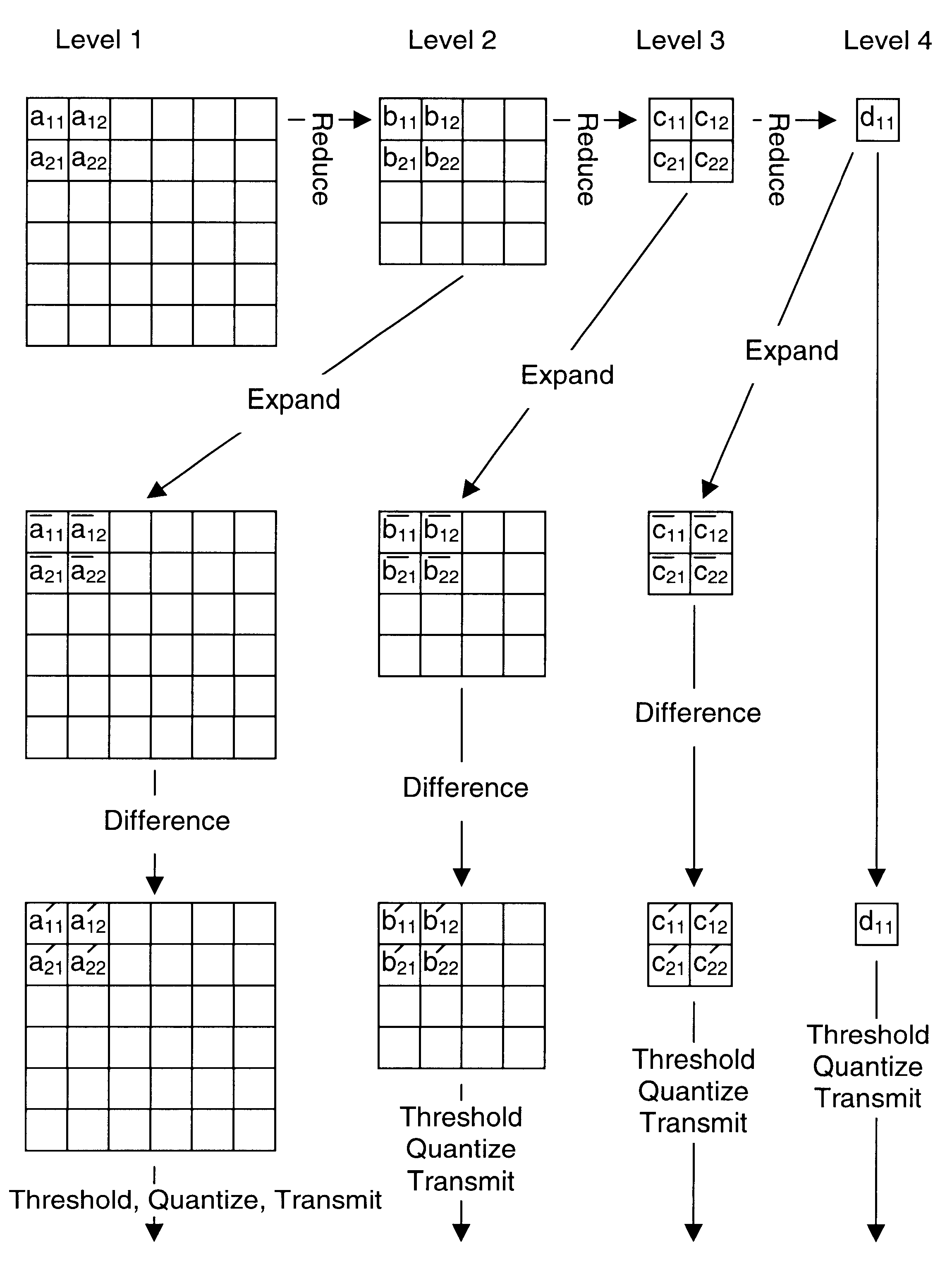Foveated image coding system and method for image bandwidth reduction
a bandwidth reduction and image technology, applied in the field of image data compression, can solve the problems of slow mode 4 and produce a bit poor image quality, and achieve the effects of superior foveation, maximum compression, and optimal perceptual quality
- Summary
- Abstract
- Description
- Claims
- Application Information
AI Technical Summary
Benefits of technology
Problems solved by technology
Method used
Image
Examples
Embodiment Construction
An important facet of the current invention is its ability to be run with conventional hardware, including computer, display, camera and eye-tracking equipment. In one embodiment of the invention, the computers may be any PC compatible Pentium.RTM. or Pentium.RTM. Pro with a PCI bus. Acceptable cameras include any NTSC (RS-170) camera (e.g., Sony XC-75) and many digital cameras (e.g. Dalsa CA-D2-512 digital camera, Dalsa, Waterloo, ONT, Canada). Conventional frame grabbers are also sufficient (e.g., MuTech MU-1000 / MT-1300 (RS-170) or MU-1000 / MV-1100 (digital), MuTech, Billerica, Mass.) as camera 20. Almost any commercially available eye-tracker 16 can be used in the system (e.g., Forward Technologies, San Marcos, Tex.; ISCAN Inc., Cambridge Mass.; Applied Science Laboratories, Bedford, Mass.; Express Eye, Renquishausen, Germany). To read the eye tracking signals, any A / D card (12 bits or better) and digital I / O card (8 bits or better), will suffice (e.g., Analogic HSDAS-16, Analogic...
PUM
 Login to View More
Login to View More Abstract
Description
Claims
Application Information
 Login to View More
Login to View More - R&D
- Intellectual Property
- Life Sciences
- Materials
- Tech Scout
- Unparalleled Data Quality
- Higher Quality Content
- 60% Fewer Hallucinations
Browse by: Latest US Patents, China's latest patents, Technical Efficacy Thesaurus, Application Domain, Technology Topic, Popular Technical Reports.
© 2025 PatSnap. All rights reserved.Legal|Privacy policy|Modern Slavery Act Transparency Statement|Sitemap|About US| Contact US: help@patsnap.com

